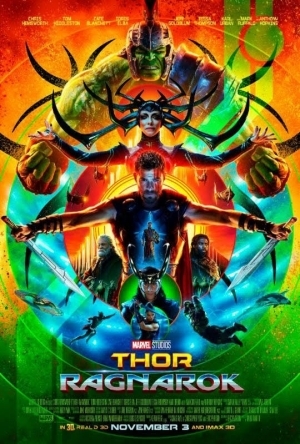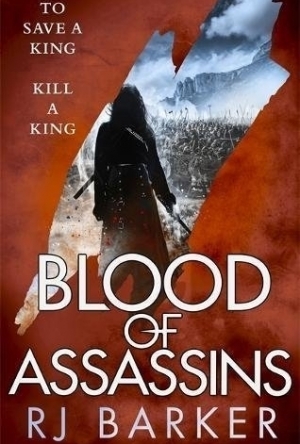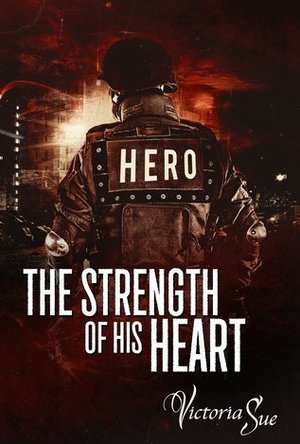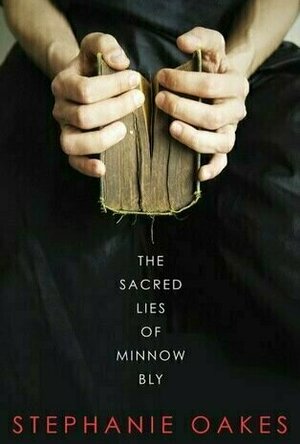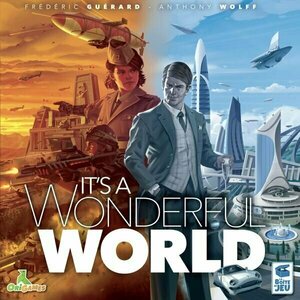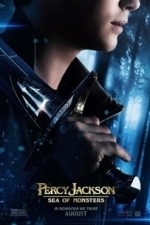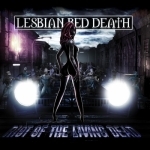Search
Search results
MichaelS (0 KP) rated Thor: Ragnarok (2017) in Movies
Feb 20, 2018
Thor has always been the red headed stepchild of the Marvel Cinematic Universe. He's there, but nobody really seems to care all that much. His presence in the Avengers films is always more in the background, and his solo movies have been mediocre at best. Nothing that warrants more than one viewing. Now, with a healthy dose of Flash Gordon flair, Thor finally gets a movie that elevates this particular branch of the MCU to good, popcorn fun.
Visually, the movie is splendid. Bright colors and sweeping visuals create great backgrounds and settings. The hand to hand fights are impactful, and a aerial chase scene is exciting, and well shot. The music smacks of 70's science fiction, and 80's action movies, giving it a very retro feel. And the director is obviously a big fan of Led Zeppelin's "Immigrant Song". It's used in 2 fight scenes, which seems redundant, as Kiss' "God Of Thunder", or AC/DC's "Thunderstruck" would've been welcome additions.
But the film suffers from the same shortcomings as most other Marvel movies. First, the over reliance on humor continues to be crutch for the entire MCU. Way too often, the plot stops dead in it's track to tell a joke, and humor is injected into serious situations, completely erasing any feeling of something actually being at stake. After all, if the characters are cracking jokes, what they're fighting for must not be that important.
Once again, Marvel shits the bed when it comes to having a threatening villain. As Hela, Cate Blanchett is a step up from the useless villains Marvel usually produces, but even so, we're never really sure what exactly she's after. And when Thor devises a plan to stop her, it seemed to me that plan was simply doing Hela was out to accomplish in the first place. Other than that, she talks slow, walks, slow, and flicks her wrists a lot for various reasons.
The biggest problem with this movie is indicative of the entire MCU at this point. These movies simply can not stand on their own. They're so dependent on the viewer having seen all the other Marvel movies, that you'll be lost on many plot points if you go into this movie cold. Cameos by characters from other Marvel movies serve no point, other than to remind you that this movie is a part of a "cinematic universe"...two words, and a concept, I'd be glad to never deal with again.
Chris Hemsworth is solid as Thor, but he's always been rather unremarkable in the role. He does have a good chemistry with Mark Ruffalo's Bruce Banner/Hulk, but it's never really explained how Hulk was suddenly able to be such a chatterbox. Tessa Thompson is a welcome addition as Valkyrie. She has more layers to her character than any other in the movie, and looks great in tight leather. Tom Hiddleston is back...again...as Loki. It's never a good thing when the villain of your movie is more popular than the hero, and this movie completes Loki's transformation into full blown good guy. So, there's that.
All that being said, the movie is undeniable fun. It's has a very retro, Flash Gordon feel to it. Right down to a synthesized musical score that is a mixture of 70's science fiction, and 80's action movies. The action consists mostly of hand to hand fights, and for the most part, they're done very well. The final "three fights at once" scenario is reminiscent of movies like Return Of The Jedi, where the effects of all separate fights merge into one.
It's a fun, popcorn movie, and a major step up from the first two Thor movies. It's nothing great, or even memorable. But there's enough here to warrant additional viewings, and that's a first for this branch of the Marvel franchise.
Visually, the movie is splendid. Bright colors and sweeping visuals create great backgrounds and settings. The hand to hand fights are impactful, and a aerial chase scene is exciting, and well shot. The music smacks of 70's science fiction, and 80's action movies, giving it a very retro feel. And the director is obviously a big fan of Led Zeppelin's "Immigrant Song". It's used in 2 fight scenes, which seems redundant, as Kiss' "God Of Thunder", or AC/DC's "Thunderstruck" would've been welcome additions.
But the film suffers from the same shortcomings as most other Marvel movies. First, the over reliance on humor continues to be crutch for the entire MCU. Way too often, the plot stops dead in it's track to tell a joke, and humor is injected into serious situations, completely erasing any feeling of something actually being at stake. After all, if the characters are cracking jokes, what they're fighting for must not be that important.
Once again, Marvel shits the bed when it comes to having a threatening villain. As Hela, Cate Blanchett is a step up from the useless villains Marvel usually produces, but even so, we're never really sure what exactly she's after. And when Thor devises a plan to stop her, it seemed to me that plan was simply doing Hela was out to accomplish in the first place. Other than that, she talks slow, walks, slow, and flicks her wrists a lot for various reasons.
The biggest problem with this movie is indicative of the entire MCU at this point. These movies simply can not stand on their own. They're so dependent on the viewer having seen all the other Marvel movies, that you'll be lost on many plot points if you go into this movie cold. Cameos by characters from other Marvel movies serve no point, other than to remind you that this movie is a part of a "cinematic universe"...two words, and a concept, I'd be glad to never deal with again.
Chris Hemsworth is solid as Thor, but he's always been rather unremarkable in the role. He does have a good chemistry with Mark Ruffalo's Bruce Banner/Hulk, but it's never really explained how Hulk was suddenly able to be such a chatterbox. Tessa Thompson is a welcome addition as Valkyrie. She has more layers to her character than any other in the movie, and looks great in tight leather. Tom Hiddleston is back...again...as Loki. It's never a good thing when the villain of your movie is more popular than the hero, and this movie completes Loki's transformation into full blown good guy. So, there's that.
All that being said, the movie is undeniable fun. It's has a very retro, Flash Gordon feel to it. Right down to a synthesized musical score that is a mixture of 70's science fiction, and 80's action movies. The action consists mostly of hand to hand fights, and for the most part, they're done very well. The final "three fights at once" scenario is reminiscent of movies like Return Of The Jedi, where the effects of all separate fights merge into one.
It's a fun, popcorn movie, and a major step up from the first two Thor movies. It's nothing great, or even memorable. But there's enough here to warrant additional viewings, and that's a first for this branch of the Marvel franchise.
Ross (3284 KP) rated Blood of Assassins in Books
Feb 12, 2018
I can't quite see what the fuss is all about
*** Disclosure: I received an advance copy of this book from NetGalley in return for an honest review ***
I read Blood of Assassins straight on the back of Age of Assassins, which I thought was OK.
Here we are back with Girton Club-Foot and his assassin master 5 years after the conclusion of the first book. Having travelled as mercenaries during this time, Girton has stopped training with the sword and picked up a warhammer instead. The book opens with he and his master seeing off some foreign assassins of their own, his master becoming poisoned in the conflict.
The Tired Lands has deteriorated over this time with Girton's three fellow squires all vying to become king, resulting in a long war that has taken its toll on the land and its people.
Girton becomes tasked with finding the spy within his old friend, Rufra's, camp and soon becomes embroiled in finding a murderer and fending off attacks on the camp and nearby towns.
Girton is one of the most annoying characters I have come across for a while, being incredibly stupid, selfish and childish. He is mooted as an incredible warrior on his return, which I thought of as odd due to nobody seeing his true skills in the first book - he always had to pretend to be mostly useless to hide his assassin and sorcery abilities. Hi is also praised for solving the mystery over the assassin-hiring in the first book, even though he solved that by luck, people just confessing to him or other people working it out instead of him.
Here he again does next to nothing to solve the mystery of the spy and only when he is confronted by them does he work it out.
As in the first book, he again becomes embroiled in identifying a murderer in the camp, which he again does despite his stupidity.
I'm all for an anti-hero but they are supposed to still make you either love them or hate them, I found myself completely indifferent to Girton's plight and just wanted to get through it.
There were more typical fantasy battle scenes in this book, which were well executed, but these were few and far between and came somewhat at odds with the plot. This redeemed the book for me.
However, as with the first book, there were no hints at who the culprit was, too much of it was left to the reveal, meaning the mystery aspect of the book was a little clumsy.
And the dream sequences, which in the first book served to tell the story of Girton's upbringing, here are a complete nonsense and add nothing to the story. Just flowery nonsense.
Barker has a good turn of phrase, but at times I thought it just confusing:
"The impact came from behind, high in the centre of my back, throwing me forward.
An arrow.
I knew the way they killed. Felt its ghost as it ruptured my lungs, split my breastbone and burst from my chest. I hit the floor, dust billowing from the carpet. The weight on my back forced me down into the choking cloud.
Not an arrow."
For me this was style over substance and left me unnecessarily confused as to what was happening.
The first person perspective is also fatally flawed in this setting as we therefore automatically know Girton survives, taking the edge off all the battles he is involved in.
In summary, a little flowery at times and doesn't know whether it wants to be a fantasy book or a thriller and succeeds in neither all that well.
I read Blood of Assassins straight on the back of Age of Assassins, which I thought was OK.
Here we are back with Girton Club-Foot and his assassin master 5 years after the conclusion of the first book. Having travelled as mercenaries during this time, Girton has stopped training with the sword and picked up a warhammer instead. The book opens with he and his master seeing off some foreign assassins of their own, his master becoming poisoned in the conflict.
The Tired Lands has deteriorated over this time with Girton's three fellow squires all vying to become king, resulting in a long war that has taken its toll on the land and its people.
Girton becomes tasked with finding the spy within his old friend, Rufra's, camp and soon becomes embroiled in finding a murderer and fending off attacks on the camp and nearby towns.
Girton is one of the most annoying characters I have come across for a while, being incredibly stupid, selfish and childish. He is mooted as an incredible warrior on his return, which I thought of as odd due to nobody seeing his true skills in the first book - he always had to pretend to be mostly useless to hide his assassin and sorcery abilities. Hi is also praised for solving the mystery over the assassin-hiring in the first book, even though he solved that by luck, people just confessing to him or other people working it out instead of him.
Here he again does next to nothing to solve the mystery of the spy and only when he is confronted by them does he work it out.
As in the first book, he again becomes embroiled in identifying a murderer in the camp, which he again does despite his stupidity.
I'm all for an anti-hero but they are supposed to still make you either love them or hate them, I found myself completely indifferent to Girton's plight and just wanted to get through it.
There were more typical fantasy battle scenes in this book, which were well executed, but these were few and far between and came somewhat at odds with the plot. This redeemed the book for me.
However, as with the first book, there were no hints at who the culprit was, too much of it was left to the reveal, meaning the mystery aspect of the book was a little clumsy.
And the dream sequences, which in the first book served to tell the story of Girton's upbringing, here are a complete nonsense and add nothing to the story. Just flowery nonsense.
Barker has a good turn of phrase, but at times I thought it just confusing:
"The impact came from behind, high in the centre of my back, throwing me forward.
An arrow.
I knew the way they killed. Felt its ghost as it ruptured my lungs, split my breastbone and burst from my chest. I hit the floor, dust billowing from the carpet. The weight on my back forced me down into the choking cloud.
Not an arrow."
For me this was style over substance and left me unnecessarily confused as to what was happening.
The first person perspective is also fatally flawed in this setting as we therefore automatically know Girton survives, taking the edge off all the battles he is involved in.
In summary, a little flowery at times and doesn't know whether it wants to be a fantasy book or a thriller and succeeds in neither all that well.
Debbiereadsbook (1611 KP) rated The Strength Of His Heart (Enhanced #4) in Books
Jul 15, 2019
my fav of the four!
Independent reviewer for Divine Magazine, I was gifted the AUDIO version of this book.
This is book 4 in the Enhanced series, and it’s not necessary to have read/listened to the other three books, but it might help give you a better picture of what it means to be Enhanced, and what this team means to Vance.
All Vance wanted to do, as a child, was follow in his father’s footsteps and join the police force. Waking up with the mark on his face put pays to that, but he was one of the lucky ones. His family did not treat him any differently, and they love Vance, period. Sam’s upbringing is very different, never knowing his father, and his mother dying when was he was a small child. Joining the DEA as an undercover agent helped him get over that, but now he wants out. Meeting Vance and the members of HERO is a dream come true, and Vance himself is a wet dream come true for Sam. But Sam won’t be drawn into anything with the much bigger man, he suffered before and will not again. But when Sam is kidnapped and Vance’s undercover gig is blown, they have to trust each other’s heart will be strong enough to get them out of this.
Vance is a sweetheart! Oh, I loved him here, once we get into his head. He really just wants to look after people, even though his gift was size and strength, he doesn’t want to use it. And Sam? Sam pushes all of Vance’s buttons and then some, he really does. Vance is smitten, right from when we met Sam in book three, and being partnered with Sam here? Vance is in heaven. At least till Sam and Vance have an encounter that ends all kinds of wrong for all kinds of reasons and neither man will talk to the other.
Sam’s past comes back to kidnap him here, and when it’s discovered WHO? I did NOT see that one coming, let me tell ya! But what they are doing with Enhanced adults and indeed some children, is awful, and it’s difficult reading, it really is.
This is far less explicit than the other three books, but I think it didn’t need to be. There is enough of Vance and Sam’s emotions to keep you going!
We meet Vance’s brother here. And while I had him pegged as the partner of a certain nurse, it turns out I am wrong and one of the team is strangely affected by Daniel. Their story, I *think* is next and I cannot wait to read it! Or listen, rather, cos I don’t like to flip between listening and reading in a series!
Nick J. Russo again narrates.
I am loving the combination of Ms Sue and Mr Russo, I really am!
Russo’s voices are clear and consistent across all four books, and his reading voice is deep and even. I have no trouble keeping up with multiple person conversations.
It’s the EMOTIONS I find, that Russo gets across. You can’t always pick that up when you read a book, no matter how well it’s written (and these books are VERY well written!) but hearing someone’s voice, telling you about their rotten childhood and what they had to do to survive, it gets you, right in the heart. I had to stop what I was doing many times, just to LISTEN, you know?? I had to concentrate on what was being said, cos it got to me so much.
I hope that Russo will continue to narrate the books that Victoria Sue continues to write! Cos you know, everyone needs to be happy, and they ain’t right now!
5 stars for the book
5 stars for the narration
5 stars overall
**same worded review will appear elsewhere**
This is book 4 in the Enhanced series, and it’s not necessary to have read/listened to the other three books, but it might help give you a better picture of what it means to be Enhanced, and what this team means to Vance.
All Vance wanted to do, as a child, was follow in his father’s footsteps and join the police force. Waking up with the mark on his face put pays to that, but he was one of the lucky ones. His family did not treat him any differently, and they love Vance, period. Sam’s upbringing is very different, never knowing his father, and his mother dying when was he was a small child. Joining the DEA as an undercover agent helped him get over that, but now he wants out. Meeting Vance and the members of HERO is a dream come true, and Vance himself is a wet dream come true for Sam. But Sam won’t be drawn into anything with the much bigger man, he suffered before and will not again. But when Sam is kidnapped and Vance’s undercover gig is blown, they have to trust each other’s heart will be strong enough to get them out of this.
Vance is a sweetheart! Oh, I loved him here, once we get into his head. He really just wants to look after people, even though his gift was size and strength, he doesn’t want to use it. And Sam? Sam pushes all of Vance’s buttons and then some, he really does. Vance is smitten, right from when we met Sam in book three, and being partnered with Sam here? Vance is in heaven. At least till Sam and Vance have an encounter that ends all kinds of wrong for all kinds of reasons and neither man will talk to the other.
Sam’s past comes back to kidnap him here, and when it’s discovered WHO? I did NOT see that one coming, let me tell ya! But what they are doing with Enhanced adults and indeed some children, is awful, and it’s difficult reading, it really is.
This is far less explicit than the other three books, but I think it didn’t need to be. There is enough of Vance and Sam’s emotions to keep you going!
We meet Vance’s brother here. And while I had him pegged as the partner of a certain nurse, it turns out I am wrong and one of the team is strangely affected by Daniel. Their story, I *think* is next and I cannot wait to read it! Or listen, rather, cos I don’t like to flip between listening and reading in a series!
Nick J. Russo again narrates.
I am loving the combination of Ms Sue and Mr Russo, I really am!
Russo’s voices are clear and consistent across all four books, and his reading voice is deep and even. I have no trouble keeping up with multiple person conversations.
It’s the EMOTIONS I find, that Russo gets across. You can’t always pick that up when you read a book, no matter how well it’s written (and these books are VERY well written!) but hearing someone’s voice, telling you about their rotten childhood and what they had to do to survive, it gets you, right in the heart. I had to stop what I was doing many times, just to LISTEN, you know?? I had to concentrate on what was being said, cos it got to me so much.
I hope that Russo will continue to narrate the books that Victoria Sue continues to write! Cos you know, everyone needs to be happy, and they ain’t right now!
5 stars for the book
5 stars for the narration
5 stars overall
**same worded review will appear elsewhere**
Heather Cranmer (2721 KP) rated The Sacred Lies of Minnow Bly in Books
Feb 5, 2020
After watching Sacred Lies on Facebook Watch and finding out it was based on a book, I knew I had to find a copy of the novel! I was beyond happy (and surprised) that my local library had a copy of The Sacred Lies of Minnow Bly by Stephanie Oakes lying around.
Minnow Bly has been part of the Kevinian cult since she was 5 years old. When police find her next to the badly beaten body of a teenage boy, they are shocked to learn that she has no hands. After being placed in juvenile detention, Minnow starts to learn new things about the world. After an FBI agent takes an interest in her case, Minnow must decide if she wants to tell him the truth of what really went on in the cult or if some things are better left unsaid.
The plot for The Sacred Lies of Minnow Bly was incredibly interesting. Oakes did a fantastic job of making Minnow's world come to life. I was instantly transported to the settings of The Sacred Lies of Minnow Bly quite easily each time I started reading this book. There are some really emotional scenes in this book such as some of the scenes with Minnow and Jude, Minnow's hands being chopped off, and the scene towards the end with Minnow's sister Constance. The Sacred Lies of Minnow Bly was definitely an emotional roller coaster for sure. There were plenty of plot twists throughout the book which would leave me with my mouth hanging open quite a bit. The pacing is perfect throughout this novel. All of my questions were answered by the ending of the book. However, the ending of the book is quite speculative about Minnow's future.
The characters in The Scared Lies of Minnow Bly were all very fleshed out and realistic sounding. Many times it felt as if I was reading about something that actually happened instead of a fictitious story. My heart went out to Minnow with all she had to go through, but I admired her strength and determination to not be a victim. I loved her curious nature and how she wanted to learn as much as possible. Minnow's resolve was so strong. I loved Jude so much. He was such a sweet and caring boy who had also been through more than he should. I loved how he wanted to take care of Minnow and how much he truly cared about her. I loved reading about Minnow's and Jude's relationship blossoming. Dr. Wilson was another great character. I wish there would have been a bit more back story for Dr. Wilson, but I did like how he cared about Minnow and her story and how he challenged her to think for herself. One of my favorite characters was Angel, Minnow's cellmate. She's another who challenged Minnow's beliefs and wanted to help educate Minnow. It was a nice touch to see this hardened girl really go out of her way to take care of Minnow and to make sure Minnow thrived.
Trigger warnings The Sacred Lies of Minnow Bly include profanity, violence, death, sex (though not graphic at all), and brainwashing.
Overall, The Sacred Lies of Minnow Bly was such a fascinating read. It had such a fantastic plot and a great cast of characters. It was too easy to get lost in their world. I would definitely recommend The Sacred Lies of Minnow Bly by Stephanie Oakes to everyone aged 15+ who want to get lost in a fantastically written novel! The Sacred Lies of Minnow Bly won't leave you disappointed at all.
Minnow Bly has been part of the Kevinian cult since she was 5 years old. When police find her next to the badly beaten body of a teenage boy, they are shocked to learn that she has no hands. After being placed in juvenile detention, Minnow starts to learn new things about the world. After an FBI agent takes an interest in her case, Minnow must decide if she wants to tell him the truth of what really went on in the cult or if some things are better left unsaid.
The plot for The Sacred Lies of Minnow Bly was incredibly interesting. Oakes did a fantastic job of making Minnow's world come to life. I was instantly transported to the settings of The Sacred Lies of Minnow Bly quite easily each time I started reading this book. There are some really emotional scenes in this book such as some of the scenes with Minnow and Jude, Minnow's hands being chopped off, and the scene towards the end with Minnow's sister Constance. The Sacred Lies of Minnow Bly was definitely an emotional roller coaster for sure. There were plenty of plot twists throughout the book which would leave me with my mouth hanging open quite a bit. The pacing is perfect throughout this novel. All of my questions were answered by the ending of the book. However, the ending of the book is quite speculative about Minnow's future.
The characters in The Scared Lies of Minnow Bly were all very fleshed out and realistic sounding. Many times it felt as if I was reading about something that actually happened instead of a fictitious story. My heart went out to Minnow with all she had to go through, but I admired her strength and determination to not be a victim. I loved her curious nature and how she wanted to learn as much as possible. Minnow's resolve was so strong. I loved Jude so much. He was such a sweet and caring boy who had also been through more than he should. I loved how he wanted to take care of Minnow and how much he truly cared about her. I loved reading about Minnow's and Jude's relationship blossoming. Dr. Wilson was another great character. I wish there would have been a bit more back story for Dr. Wilson, but I did like how he cared about Minnow and her story and how he challenged her to think for herself. One of my favorite characters was Angel, Minnow's cellmate. She's another who challenged Minnow's beliefs and wanted to help educate Minnow. It was a nice touch to see this hardened girl really go out of her way to take care of Minnow and to make sure Minnow thrived.
Trigger warnings The Sacred Lies of Minnow Bly include profanity, violence, death, sex (though not graphic at all), and brainwashing.
Overall, The Sacred Lies of Minnow Bly was such a fascinating read. It had such a fantastic plot and a great cast of characters. It was too easy to get lost in their world. I would definitely recommend The Sacred Lies of Minnow Bly by Stephanie Oakes to everyone aged 15+ who want to get lost in a fantastically written novel! The Sacred Lies of Minnow Bly won't leave you disappointed at all.

Adobe Spark Video
Productivity and Photo & Video
App
*** App Store Editors’ Choice. #1 Best New App.*** Users say: "Brilliant and beautiful",...

Lake: Artists’ Coloring Books
Lifestyle and Entertainment
App
*** APPLE DESIGN AWARD WINNER 2017 *** “A beautifully designed, best-of-breed coloring app.” -...

Ghost Toasters - Regular Show
Games and Entertainment
App
Save the park from a ghostly invasion in this REGULAR SHOW PLATFORM SHOOTER! Gear up with the latest...
Purple Phoenix Games (2266 KP) rated It's a Wonderful World in Tabletop Games
Oct 30, 2021
When choosing board games to either play or purchase, how much importance should one put on box cover art? It is important to ME, but I lump that all in with the components and art/art style of the whole package. Why do I bring this up in the intro today? Well, I have to admit that I had really not had any interest in checking out It’s a Wonderful World until now because I judged the game by its cover, and the cover art told my brain that this would be some type of wargame. I am not entirely sure how I connected the two, but I did, and it turned me off right away. But! I was able to get this played at a local board game lounge, and boy was I wrong.
It’s a Wonderful World is a card drafting, economic, civilization building game with variable player powers (with a dash of campaign mode sprinkled on top). In it, players are attempting to build their civilization faster and better than their competitors. However, for this review, I will be playing the vanilla non-scenario solo mode.
DISCLAIMER: I was able to play this and several other games at The Table in Cookeville, TN. If you are ever in the neighborhood, check them out, and tell Nathaniel that I say hello.
To setup, put together the main board and place the round marker on Round 1. Lay out all the resources on their specific places upon the board and shuffle the deck of cards. Deal out eight stacks of five cards each and place them as mini-decks somewhere on the table. Choose a starting civilization (or just randomly choose one). The solo game is ready to play!
Typically, It’s a Wonderful World is a card drafting game, a la 7 Wonders, where players choose one card from the deck passed to them and pass it along to the next player until all cards have been drafted. In the solo mode, however, the player chooses one of the face-down mini-decks as their starting hand. Upon viewing the cards, the player may choose to place any or all of them in their Construction Area, or discard the cards for their Recycle Bonus (typically a type of resource), and/or discard two card from the mini-deck to draw five cards from the top of the main deck. From these drawn cards, the player may choose one to keep and discard all others. The kept card may be placed into the Construction Area or discarded for its Recycle Bonus resource.
Cards placed in the Construction Area require resources to be earned and placed on them in order to complete its build process. Each round the player will receive resources based on which cards have been built and placed above their starting civ card. Some cards, once completely built, will also offer more VP at game end, or supply a VP modifier.
After the first mini-deck has been played completely, the player will choose a second mini-deck and run through the same process. After this second mini-deck has been completed the round ends and play moves to the next round. Play continues in this fashion until all four rounds have been played (so all eight mini-decks). At game end the player counts up all their VP and compares it to the table in the rulebook to arrive at their final tier. My first game resulted in the rulebook calling me a Rooky. So be prepared to be humiliated by a rulebook.
Components. Aside from being bamboozled by the aggressive artwork on the cover, this is not a wargame. In fact, I very much like the artwork and the styling of this game. The cards are all laid out very well, and the iconography makes sense. The resource cubes are translucent colored (except the grayish white is opaque) and are fine quality. Overall the components are great and the art style has grown on me quite a bit.
I can see why so many people compare this to 7 Wonders. Essentially, the multiplayer game is quite similar. Card drafts (of 7 cards, no less) lead to needing resources in order to build, lead to being able to produce more resources to fuel other cards, and bonus points are awarded for having a nice card profile. Now, this being a solo review, I have to say that I much prefer It’s a Wonderful World to its forefather 7 Wonders because it comes packaged with a solo mode already in the box. This isn’t the only reason I prefer it, though. I find it easier to pick up and easier to teach to beginning gamers. Also, there is no card chaining, which seems to be a difficult concept for newer gamers to grasp initially. It’s a Wonderful World has nothing like this, and cards just work. 7 Wonders has been such a hit with my family, and I know they will greatly appreciate a more streamlined game experience with this one.
So here’s my recommendation with this one. If you are a fan of 7 Wonders but find it to be difficult to get others into it, check out It’s a Wonderful World. I feel that it is superior in many ways, and the solo mode is just icing. The solo mode gives me a great play experience, even though I typically am not a fan of games challenging you to beat your own high score. I will live with it here because the game is just so enjoyable. While 7 Wonders was my favorite game of all time for quite a while, it has since dropped out of my Top 10, and I think will be replaced entirely by It’s a Wonderful World. If your tastes are similar to mine, then do yourself a big favor and grab a copy of this one right away. It has several expansions out there, and I believe you will fall in love with drafting again. Now, where did I put my Wind Turbines…
It’s a Wonderful World is a card drafting, economic, civilization building game with variable player powers (with a dash of campaign mode sprinkled on top). In it, players are attempting to build their civilization faster and better than their competitors. However, for this review, I will be playing the vanilla non-scenario solo mode.
DISCLAIMER: I was able to play this and several other games at The Table in Cookeville, TN. If you are ever in the neighborhood, check them out, and tell Nathaniel that I say hello.
To setup, put together the main board and place the round marker on Round 1. Lay out all the resources on their specific places upon the board and shuffle the deck of cards. Deal out eight stacks of five cards each and place them as mini-decks somewhere on the table. Choose a starting civilization (or just randomly choose one). The solo game is ready to play!
Typically, It’s a Wonderful World is a card drafting game, a la 7 Wonders, where players choose one card from the deck passed to them and pass it along to the next player until all cards have been drafted. In the solo mode, however, the player chooses one of the face-down mini-decks as their starting hand. Upon viewing the cards, the player may choose to place any or all of them in their Construction Area, or discard the cards for their Recycle Bonus (typically a type of resource), and/or discard two card from the mini-deck to draw five cards from the top of the main deck. From these drawn cards, the player may choose one to keep and discard all others. The kept card may be placed into the Construction Area or discarded for its Recycle Bonus resource.
Cards placed in the Construction Area require resources to be earned and placed on them in order to complete its build process. Each round the player will receive resources based on which cards have been built and placed above their starting civ card. Some cards, once completely built, will also offer more VP at game end, or supply a VP modifier.
After the first mini-deck has been played completely, the player will choose a second mini-deck and run through the same process. After this second mini-deck has been completed the round ends and play moves to the next round. Play continues in this fashion until all four rounds have been played (so all eight mini-decks). At game end the player counts up all their VP and compares it to the table in the rulebook to arrive at their final tier. My first game resulted in the rulebook calling me a Rooky. So be prepared to be humiliated by a rulebook.
Components. Aside from being bamboozled by the aggressive artwork on the cover, this is not a wargame. In fact, I very much like the artwork and the styling of this game. The cards are all laid out very well, and the iconography makes sense. The resource cubes are translucent colored (except the grayish white is opaque) and are fine quality. Overall the components are great and the art style has grown on me quite a bit.
I can see why so many people compare this to 7 Wonders. Essentially, the multiplayer game is quite similar. Card drafts (of 7 cards, no less) lead to needing resources in order to build, lead to being able to produce more resources to fuel other cards, and bonus points are awarded for having a nice card profile. Now, this being a solo review, I have to say that I much prefer It’s a Wonderful World to its forefather 7 Wonders because it comes packaged with a solo mode already in the box. This isn’t the only reason I prefer it, though. I find it easier to pick up and easier to teach to beginning gamers. Also, there is no card chaining, which seems to be a difficult concept for newer gamers to grasp initially. It’s a Wonderful World has nothing like this, and cards just work. 7 Wonders has been such a hit with my family, and I know they will greatly appreciate a more streamlined game experience with this one.
So here’s my recommendation with this one. If you are a fan of 7 Wonders but find it to be difficult to get others into it, check out It’s a Wonderful World. I feel that it is superior in many ways, and the solo mode is just icing. The solo mode gives me a great play experience, even though I typically am not a fan of games challenging you to beat your own high score. I will live with it here because the game is just so enjoyable. While 7 Wonders was my favorite game of all time for quite a while, it has since dropped out of my Top 10, and I think will be replaced entirely by It’s a Wonderful World. If your tastes are similar to mine, then do yourself a big favor and grab a copy of this one right away. It has several expansions out there, and I believe you will fall in love with drafting again. Now, where did I put my Wind Turbines…
Harshini (25 KP) rated Percy Jackson: Sea of Monsters (2013) in Movies
Jan 4, 2018 (Updated Jan 13, 2018)
Annabeth's hair and eye colour matched the books (1 more)
"Stop walking on my roof"
Some scenes that should have been in were cut (4 more)
Some scenes were in that shouldn't have been
Some scenes were in that weren't even a part of the book they were producing
The author of the books hates the movies
The initial scene is of something that is never mentioned in the books - and I'm still kind of confused as to what the actors' characters are meant to be doing
Big Fan of the Books, Not So Much of the Movies
Contains spoilers, click to show
I had a huge issue with the first movie as is, so this may end up being a rant.
I have been a massive fan of the books for about 9 years now and can say with a fair amount of certainty that this movie does not echo its book source. Yes, they had the same characters (for the most part), but the characters being from the book does not mean that it is the movie of the book. It means that the book gave inspiration. Sure, some events that were in the book were in the movie - such as Tyson's slip with the winds, or Tyson's story at all - but some fairly important scenes were not to be seen in the movie - such as (what should have been the initial scene) the dodgeball game that reveals Tyson's immunity to fire, Siren Bay, or Circe. Not to mention the events that were changed in the movie - such as the fact that Polyphemus' island became a fairground instead of a lush paradisal island with man-eating sheep, or that the ship Clarisse is commandeering doesn't end up in Charybdis' stomach and that they avoid the two monsters all together. I'm not even counting the scenes that the director placed in this movie that should have come much later - like Percy's fight with Kronos, which shouldn't have taken place until the absolute last movie. When I saw the first movie, I said something about the way it was made, and I'll say it again: it's like the director hired someone to read the book and tell him what happened, the person read all the books and then decided to pick and choose their favourite parts and create an absolute mess of the books. I mean, it's a sign if the author of said books is the person who hates the movies the most.
That being said, I can attest to there being some good things about the movie. Alexandra Daddario (who plays Annabeth Chase, daughter of Athena) did end up changing her hair and eye colour in the movie to the described blonde hair and grey eyes (though the eyes do look very fake). I am not sure whether or not this was just because so many fans were offended by her brown hair and eyes in the first movie (which was also terrible), but I am glad that it got changed to be more in-tune with the source material. Above all, I can say that there are about five seconds of this movie that I love - and that I will stomach the surrounding minute for - and that is when Luke Castellan tells Percy to 'stop walking on [his] roof'. It is by far the funniest part of the entire movie. However, I won't lie and say I'm not glad that the series isn't going to continue to be shown on the silver screen.
I have been a massive fan of the books for about 9 years now and can say with a fair amount of certainty that this movie does not echo its book source. Yes, they had the same characters (for the most part), but the characters being from the book does not mean that it is the movie of the book. It means that the book gave inspiration. Sure, some events that were in the book were in the movie - such as Tyson's slip with the winds, or Tyson's story at all - but some fairly important scenes were not to be seen in the movie - such as (what should have been the initial scene) the dodgeball game that reveals Tyson's immunity to fire, Siren Bay, or Circe. Not to mention the events that were changed in the movie - such as the fact that Polyphemus' island became a fairground instead of a lush paradisal island with man-eating sheep, or that the ship Clarisse is commandeering doesn't end up in Charybdis' stomach and that they avoid the two monsters all together. I'm not even counting the scenes that the director placed in this movie that should have come much later - like Percy's fight with Kronos, which shouldn't have taken place until the absolute last movie. When I saw the first movie, I said something about the way it was made, and I'll say it again: it's like the director hired someone to read the book and tell him what happened, the person read all the books and then decided to pick and choose their favourite parts and create an absolute mess of the books. I mean, it's a sign if the author of said books is the person who hates the movies the most.
That being said, I can attest to there being some good things about the movie. Alexandra Daddario (who plays Annabeth Chase, daughter of Athena) did end up changing her hair and eye colour in the movie to the described blonde hair and grey eyes (though the eyes do look very fake). I am not sure whether or not this was just because so many fans were offended by her brown hair and eyes in the first movie (which was also terrible), but I am glad that it got changed to be more in-tune with the source material. Above all, I can say that there are about five seconds of this movie that I love - and that I will stomach the surrounding minute for - and that is when Luke Castellan tells Percy to 'stop walking on [his] roof'. It is by far the funniest part of the entire movie. However, I won't lie and say I'm not glad that the series isn't going to continue to be shown on the silver screen.
Connor Sheffield (293 KP) rated Riot Of The Living Dead by Lesbian Bed Death in Music
Jul 24, 2017
Awesome Rock (3 more)
Horror Movie References
Catchy Songs
Inspiring Lyrics
One of my all time favourite albums
I first found Lesbian Bed Death back in 2014 and really enjoyed what I heard. The first song I found was Halloween, and I could not get it out of my head and found myself listening to it over and over again. (Halloween was coming up and I was going to be at Whitby Goth Weekend).
When I went to book my tickets I saw that LBD were in fact going to be playing at WGW that year and I couldn't wait to hear my new found obsession live on stage in my favourite place on earth, Whitby!
After listening to the entire album (and previous albums), I found a new favourite song called Chains, which really spoke to me and in fact inspired me to write a poem called Black Candle, all about how my life throughout school etc. made me feel like I couldn't be myself but I finally broke from those chains and nowadays, I'm not afraid to be me. It was a somewhat anti-bullying themed poem, but also one about courage, and after I had finished writing it, I thought that I should let the artists that inspired me, know what their music has done for me. So I emailed them with my poem and honestly, I thought that would be that. Either they read it or they don't, but at least I went ahead and sent it.
Not long after, but drawing ever closer to the night I was going to see them live in Whitby, the manager (and guitarist), Dan Peach replied to my email, telling me he enjoyed reading the poem and that he showed the other band members and they also liked it. This was surreal to me and I was so excited to walk up to them during the meet and greet before the gig and tell them that I was the one who wrote the poem. When the night came for that opportunity I was nervous as hell, and didn't know how to talk to them. I mean, they're just people, but to me and my mind they were a band with many fans and fans can get creepy. I didn't want to be creepy. So I walked up, greeted them and told them it was so awesome to meet them, and then told them I was the one who wrote the poem and when they all told me it was awesome, I could not stop grinning like a Cheshire cat, and that's not even where the story ends.
After they played a few songs on stage, Kittie announced that the next song was for someone special in the audience. It was a little song of theirs called 'Chains' and it was dedicated to the person it inspired to write a poem about breaking free. Dan Peach nodded at me and so did Kittie and I was lost for words. I rocked so much that night and it remains the greatest night of my life.
The band themselves are awesome, and the music they create is something catchy and lyrically brilliant, with songs that'll stick in your head. I have listened to this album countless times and it remains on of my favourite albums of all time. I highly recommend the album and the band!
When I went to book my tickets I saw that LBD were in fact going to be playing at WGW that year and I couldn't wait to hear my new found obsession live on stage in my favourite place on earth, Whitby!
After listening to the entire album (and previous albums), I found a new favourite song called Chains, which really spoke to me and in fact inspired me to write a poem called Black Candle, all about how my life throughout school etc. made me feel like I couldn't be myself but I finally broke from those chains and nowadays, I'm not afraid to be me. It was a somewhat anti-bullying themed poem, but also one about courage, and after I had finished writing it, I thought that I should let the artists that inspired me, know what their music has done for me. So I emailed them with my poem and honestly, I thought that would be that. Either they read it or they don't, but at least I went ahead and sent it.
Not long after, but drawing ever closer to the night I was going to see them live in Whitby, the manager (and guitarist), Dan Peach replied to my email, telling me he enjoyed reading the poem and that he showed the other band members and they also liked it. This was surreal to me and I was so excited to walk up to them during the meet and greet before the gig and tell them that I was the one who wrote the poem. When the night came for that opportunity I was nervous as hell, and didn't know how to talk to them. I mean, they're just people, but to me and my mind they were a band with many fans and fans can get creepy. I didn't want to be creepy. So I walked up, greeted them and told them it was so awesome to meet them, and then told them I was the one who wrote the poem and when they all told me it was awesome, I could not stop grinning like a Cheshire cat, and that's not even where the story ends.
After they played a few songs on stage, Kittie announced that the next song was for someone special in the audience. It was a little song of theirs called 'Chains' and it was dedicated to the person it inspired to write a poem about breaking free. Dan Peach nodded at me and so did Kittie and I was lost for words. I rocked so much that night and it remains the greatest night of my life.
The band themselves are awesome, and the music they create is something catchy and lyrically brilliant, with songs that'll stick in your head. I have listened to this album countless times and it remains on of my favourite albums of all time. I highly recommend the album and the band!
